GK Compilation from UPSC CISF Exam 2018:
1: Buddha’s teachings were compiled as Tipitaka — literally meaning three baskets to hold different types of texts. Which of the following texts is/are correctly matched according to the subject matter?
- Vinaya Pitaka: Buddha’s teachings
- Sutta Pitaka: Rules and regulations of the monastic order
- Abhidhamma Pitaka: Philosophical matters
Select the correct answer using the code given below :
(a) 3 only
(b) 1 and 2 only
(c) 2 and 3 only
(d) 1, 2 and 3
Ans: 3 only (a)
2: Gandhiji’s’ ideology, best articulated in his seminal work, “Hind Swaraj” written in 1909, expounds that
- ancient Indian civilization had immense assimilative power of absorbing
foreigners who made India their home. - industrial capitalism had a detrimental impact on human civilization.
- Parliamentary Democracy did not reflect the general will of the people, but of the political parties.
Which of the above statements is/are correct?
Select the correct answer using the code given below :
(a) 1 only
(b) 1 and 2 only
(c) 1, 2 and 3
(d) 3 only
Ans: 1, 2 and 3 (c)
3: Which of the following was/were not the feature(s) of the Swadeshi Movement in Bengal (1905 – 1908)?
- Swadeshi was based on the idea of self-help through industries and schools.
- Tagore had sketched out his blue-print for swadeshi in Swadeshi Samaj.
- Leaders like Aurobindo called for more radical measures to achieve Swadeshi goals.
- Bhagat Singh joined the Swadeshi Movement in its later phases.
Select the correct answer using the code given below :
(a) 1, 2 and 3 only
(b) 2 and 3 only
(c) 3 and 4 only
(d) 1 only
Ans: 1, 2 and 3 only (a)
4: Which of the following statements about Dayananda Saraswati (1824 – 1883) is/are correct?
- He was from present-day Rajasthan.
- He found many followers from amongst the trading castes.
- He founded the Arya Samaj inspired by the Brahmo Samaj.
- He advocated Sanskrit based education.
Select the correct answer using the code given below :
(a) 1, 2 and 4 only
(b) 1, 3 and 4 only
(c) 2 and 4 only
(d) 2 only
Ans: 2 and 4 only (c)
5: Name the British liberal who was associated with the Manchester School that was critical of the British rule in India,
(a) J.S. Mill
(b) Lord Ripon
(c) Fitzjames Stephen
(d) John Bright
Ans: John Bright (d)
6: Name the Indian financier who funded the building of the Bombay University clock tower.
(a) Cowasjee Jehangir Readymoney
(b) Premchand Roychand
(c) Jamshetji Tata
(d) H. St. Clair Wilkins
Ans: Premchand Roychand (b)
7: The painter Mola Ram was associated with which one of the following styles of paintings?
(a) Bundi Paintings
(b) Garhwal Paintings
(c) Mewar Paintings
(d) Kangra Paintings
Ans: Garhwal Paintings (b)
8: Which of the following statements about Kautilya’s Arthashastra is/are correct?
- It is the first Indian text to describe a State.
- It does not contain any reference to the Mauryas.
- It is a theoretical text.
Select the correct answer using the code given below :
(a) 1 only
(b) 1 and 3 only
(c) 2 and 3 only
(d) 1, 2 and 3
Ans: 2 and 3 only (c)
9: Which of the following statements about the founding of the Indian National Congress is/are correct?
- It was supported by A.O. Hume who was a political liberal.
- It was based on similar associations in South-East Asia.
- It was initially supported by Indian elites who had access to Western
education and English.
Select the correct answer using the code given below :
(a) 1 only
(b) 2 only
(c) 2 and 3 only
(d) 1 and 3 only
Ans: 1 and 3 only (d)
10: Which of the following statements about the Ashokan pillars is/are not correct?
- The 14th century Tarikh-i-Firuz Shahi makes reference to the Ashokan pillars.
- The writer Shams Siraj Afif gives an account of the Ashokan pillars known as Delhi-Topra and Delhi-Meerut,
- There are instances of the Ashokan pillars or their fragments being
worshipped as Shiv Lingas. - The Ashokan pillars were produced in gold, iron and bronze.
Select the correct answer using the code given below :
(a) 1 only
(b) 2 only
(c) 2, 3 and 4 only
(d) 4 only
Ans: 4 only (d)
11: Which one of the following is the largest component of the soil system?
(a) Living organisms
(b) Mineral matters
(c) Soil solution
(d) Soil organic matter
Ans: Mineral matters (b)
12: Which one of the following pairs of glaciers and locations is not correctly matched?
(a) Nubra Valley — Jammu and Glacier Kashmir
(b) Milam Glacier — Uttarakhand
(c) Bhaga Valley — Himachal Pradesh Glacier
(d) Zemu Glacier — Arunachal Pradesh
Ans: Zemu Glacier — Arunachal Pradesh (d)
13: Which one among the following statements is not correct ?
(a) Johannes Kepler proved that the path of each planet around the Sun is elliptical with the Sun at its focus.
(b) The first successful attempt to establish the size of the Earth is credited to Eratosthenes.
(c) The first Greek to profess a Sun-centred or Heliocentric Universe was Sir Isaac Newton.
(d) The famous astronomical book Almagest was compiled by Ptolemy.
Ans: The first Greek to profess a Sun-centred or Heliocentric Universe was Sir Isaac Newton (c)
14: Which of the following items is/are associated with the mulberry plant?
- Silk
- Cocoon
- Pashmina
- Hemp
Select the correct answer using the code given below:
(a) 1 and 2 only
(b) 1, 2 and 3 only
(c) 1 and 4 only
(d) 2 only
Ans: 1 and 2 only (a)
15: Which of the following are products of Agro-Based Industry ?
- Silk yam
- Cotton yam
- Polyfibre yarn
- Polyester yarn
Select the correct answer using the code given below :
(a) 1, 2 and 3 only
(b) 1 and 4 only
(c) 3 and 4 only
(d) 1 and 2 only
Ans: 1 and 2 only (d)
16: Which one of the following countries is known as the “Land of a Thousand Lakes”?
(a) Denmark
(b) Finland
(c) The Netherlands
(d) Poland
Ans: Finland (b)
17: The Central Potato Research Institute is located at
(a) Almora
(b) Shimla
(c) Noida
(d) Murshidabad
Ans: Shimla (b)
18: Kingdom Monera includes
(a) Euglenoids and Protozoans
(b) Archaebacteria and Eubacteria
(c) Fungi and Phycomycetes
(d) Basidiomycetes and Deuteromycetes
Ans: Archaebacteria and Eubacteria (b)
19: Binomial nomenclature means
(a) Biological names are generally in Latin and written in italics. The first word is the genus and the second word is the species.
(b) Biological names are generally taken from father and mother.
(c) Biological name originates from order and genus.
(d) Biological name originates from phylum and genus.
Ans: Biological names are generally in Latin and written in italics. The first word is the genus and the second word is the species (a)
20: In dialysis for kidney failure patients, the dialysing fluid is iso-osmotic to
(a) Blood
(b) Urine
(c) Water
(d) Body fluid
Ans: Blood (a)
21: Young children with vitamin D deficiency have trouble in absorbing which of the following minerals?
(a) Calcium and Phosphorus
(b) Iron and Sodium
(c) Sodium and Potassium
(d) Zinc and Iron
Ans: Calcium and Phosphorus (a)
22: The X-chromosome linked colour blindness affects the ability to detect the difference between which of the following lights?
(a) Green light and red light
(b) Yellow light and blue light
(c) Blue light and violet light
(d) Yellow light and red light
Ans: Green light and red light (a)
23: Which one of the following determines the direction of induced current?
(a) Fleming’s left hand rule
(b) Fleming’s right hand rule
(c) Feynman’s left hand rule
(d) Right hand thumb rule
Ans: Fleming’s right hand rule (b)
24: Which one of the following gases is not responsible for global warming?
(a) Water vapour
(b) Chlorofluorocarbons
(c) Nitrogen
(d) Methane
Ans: Nitrogen (c)
25: Which one of the following is an eco-friendly solvent?
(a) Liquid ammonia
(b) Carbon disulphide
(c) Benzene
(d) Water
Ans: Water (d)
26: Graphite is a good conductor of electricity. It is because of its
(a) linear structure
(b) tetrahedral structure
(c) triangular planar structure
(d) hexagonal multilayer structure
Ans: hexagonal multilayer structure (d)
27: Which one among the following is responsible for the command, control and operational decisions of nuclear weapons in India?
(a) Nuclear Commission of India
(b) Nuclear Command Authority
(c) The Ministry of Defence
(d) The Cabinet Committee on Security
Ans: Nuclear Command Authority (b)
28: Which one of the following statements about the Directive Principles of State Policy is not correct?
(a) The Directive Principles constitute certain ideals for social justice.
(b) The Directive Principles are not confined to Part IV of the Constitution
of India.
(c) The sanction behind the Directive Principles is legal.
(d) It aims to fulfil the objective of socio-economic justice.
Ans: The sanction behind the Directive Principles is legal (c)
29: Which of the following statements is/are correct about the UN Human Rights Council ?
- It was established in the year 2006.
- The Council is made up of 47 Member States.
- The United States of America was elected to the UN Human Rights
Council in the year 2006. - Members of the Council serve for a period of five years.
Select the correct answer using the code given below :
(a) 1 and 2 only
(b) 2 only
(c) 3 and 4 only
(d) 1, 2 and 3 only
Ans: 1 and 2 only (a)
30: “One Vision, One Identity, One Community” is the motto of
(a) SAARC
(b) ASEAN
(c) SCO
(d) OAS
Ans: ASEAN (b)
31: Which one of the following Articles of the Constitution of India is related to the Address of the President at the commencement of the first session of the Parliament each year?
(a) Article 84
(b) Article 85
(c) Article 87
(d) Article 97
Ans: Article 87 (c)
32: Which one of the following Amendments to the Constitution of India made it mandatory to conduct periodic elections to the Local Government Bodies?
(a) 72nd
(b) 73rd
(c) 64th
(d) 63rd
Ans: 73rd (b)
33: Which one of the following Committees has recommended the inclusion of Fundamental Duties in the Constitution under the 42nd Amendment Act of 1976?
(a) Jagjivan Ram Committee
(b) Swaran Singh Committee
(c) V.V. Giri Commitee
(d) B.D. Jatti Committee
Ans: Swaran Singh Committee (b)
34: Who among the following certifies a bill as a Money Bill?
(a) The Chairman of the Council of States
(b) The Speaker of the House of the People
(c) The Finance Minister
(d) The President
Ans: The Speaker of the House of the People (b)
35: Which of the following statements about the Writ of Mandamus is/are correct?
- Mandamus lies against the Government.
- Mandamus lies against inferior Courts and Tribunals.
- Mandamus lies against individuals in cases where a public duty is imposed on them.
Select the correct answer using the code’ given
below :
(a) 1, 2 and 3
(b) 2 and 3 only
(c) 1 and 3 only
(d) 1 only
Ans: 1, 2 and 3 (a)
36: Which one of the following Articles of the Constitution of India provides that the State shall not deny to any person equality before the law or the equal protection of the laws within the territory of India?
(a) Article 14
(b) Article 12
(c) Article 13
(d) Article 15
Ans: Article 14 (a)
37: Which of the following statements regarding the election of the President and the Vice President of India is/are correct ?
- The President of India is elected by an electoral college consisting of the
Members of both the Houses of Parliament and the elected Members of
State Legislative Assemblies and Councils. - The Vice President of India is elected by an electoral college consisting of the Members of both the Houses of Parliament.
Select the correct answer using the code given below :
(a) 1 only
(b) 2 only
(c) Both 1 and 2
(d) Neither 1 nor 2
Ans: 2 only (b)
38: Which one of the following statements about the judgement in the D.K. Basu v. State of West Bengal case (Supreme Court, 1997) is not correct?
(a) A person arrested must be made aware of the right to have someone informed of his arrest or detention as soon as he is put under arrest or is detained.
(b) It provided for compensation in the case of displacement from land in
Government projects.
(c) The arrestee may be permitted to meet his lawyer during interrogation, though not throughout the interrogation.
(d) It emerged out of a Public Interest Litigation.
Ans: It provided for compensation in the case of displacement from land in Government projects (b)
- Modes of Nutrition
- Process of digestion in human beings
- Components of Blood
- Human Heart Important Facts
- Nervous System
- Chemical Coordination in Plants & Animals
- Tissues [Plant and Animal Tissues]
- Distinctive Characters Of Birds
- Constituents of Food: Carbohydrates, Proteins, Fats & Vitamins
- Origin and Evolution of Life

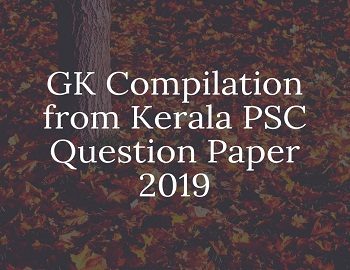
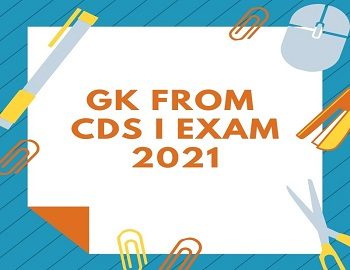
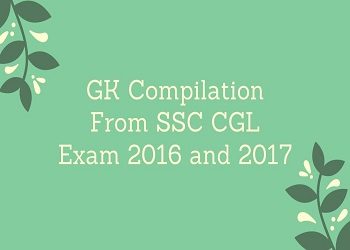

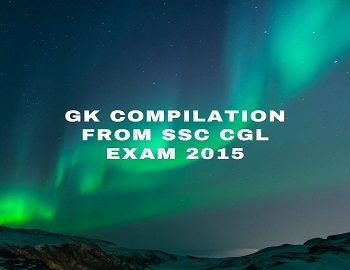
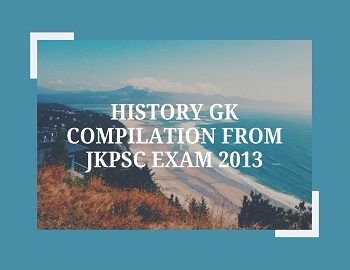
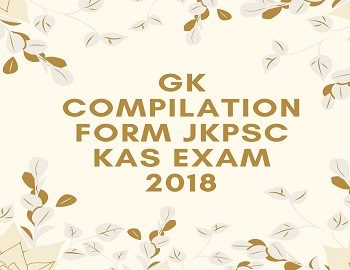
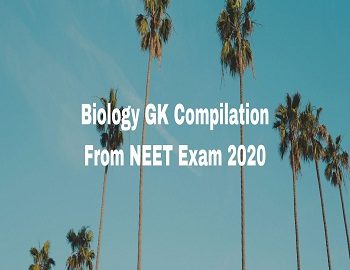
Comments (No)